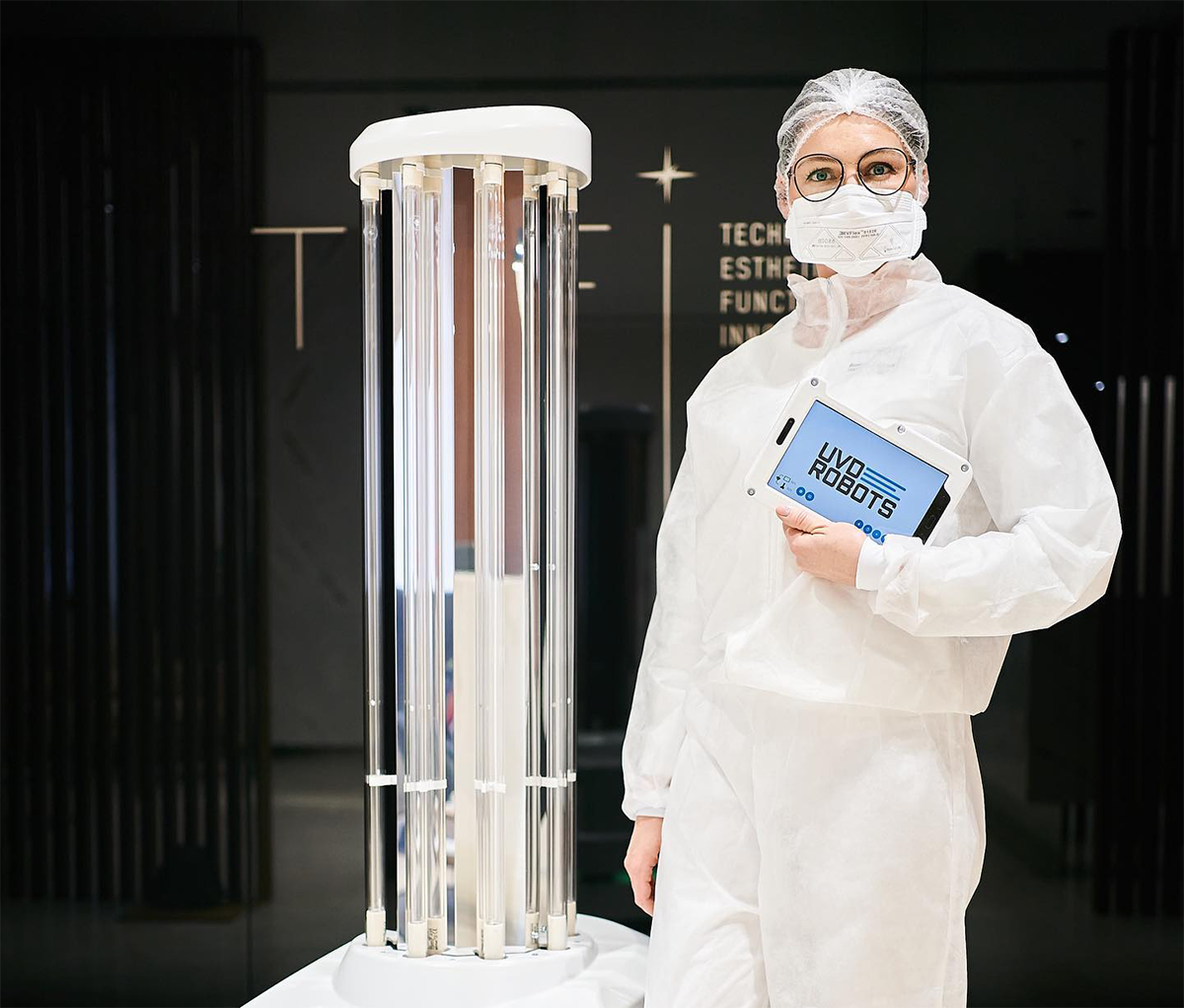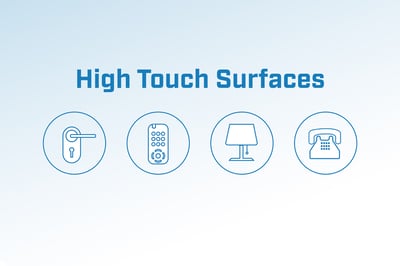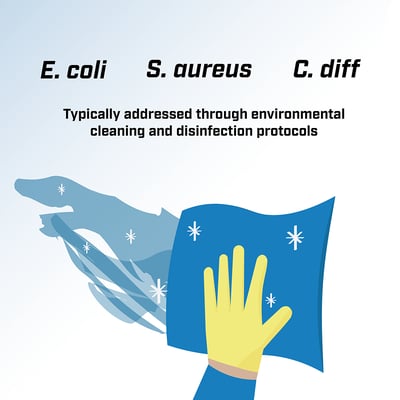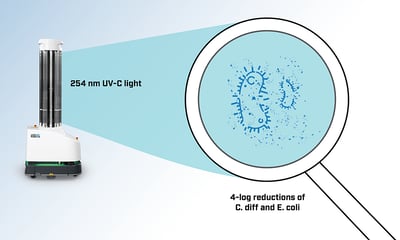Title
Content
Title
Content

Indoor environments have frequently-used surfaces such as walls, floors, and countertops – and these surfaces are different from others on a microscopic level. The following is a description of these differences and their relation to environmental disinfection.
Different areas of indoor environments may be used more or less frequently. For example, there are some surface areas in these environments that may experience far more human contact than others, and this can occur over the course of a normal working day.

These surface areas are referred to as high-touch surfaces, and this is because they frequently experience human contact when compared to other surfaces.1 High-touch surfaces may be directly related to an environments’ intended use, alternately, they may incidentally be related to its use.
High-touch surfaces have been acknowledged as possible growing habitats, or reservoirs, of microorganisms.2 High-tough surfaces are often compared to what are referred to as low-touch surfaces.3 4
High-touch surfaces may include inanimate objects like:
They may also include the surfaces of:
 Counters, and
Counters, and
High-touch surface microorganisms may include:
UVD Robots are autonomous UV disinfection robots that use Ultraviolet C (UV-C) light to reduce microorganisms commonly found on high-touch surfaces.10 As self-navigating robots, these units can be used in conjunction with manual cleaning and disinfection protocols as a “no-touch” disinfection method.11

These robots use 254 nanometer (nm) UV-C light, a form of Ultraviolet light whose efficacy has been found, in studies, to be greater than other forms of UV light.12
In laboratory conditions, for example, 254nm UV-C light has been associated with greater than 3-log reductions of Clostridioides difficile, Staphylococcus aureus, and Klebsiella pneumoniae .13 14 This represents a microorganism reduction rate of over 99.9%.
In addition to this, UVD Robots can be programmed to operate autonomously, reducing the risk of additional human contact with high-touch surfaces.15 Reducing human contact, in effect, reduces the risk of actions that may affect environmental disinfection efforts.
High-touch surfaces are surfaces that frequently come in contact with humans. They can include a number of areas including floors, walls, door knobs, and furniture. Frequent human interactions make high-touch surfaces potential reservoirs for microorganisms, which can serve as obstacles in environmental disinfection.
UVD Robots, part of the Danish company Blue Ocean Robotics, are autonomous disinfection robots that can access high-touch surfaces with minimal human interaction. In addition to this, UVD Robots use 254 nm UV-C light to disinfect surfaces of microorganisms with high rates of efficacy.
Self-navigating disinfection solutions reduce human contact and can eliminate microorganisms found on high-touch surfaces to a greater degree. UVD Robots can, in this way, provide an excellent disinfection solution for indoor environments.
1. Chang, T et al. “A novel methodology to study antimicrobial properties of high-touch surfaces used for indoor hygiene applications-A study on Cu metal.” PloS one vol. 16,2 e0247081. 25 Feb. 2021, doi:10.1371/journal.pone.0247081
2. Birkett, Martin, et al. "Recent advances in metal-based antimicrobial coatings for high-touch surfaces." International Journal of Molecular Sciences 23.3 (2022): 1162.
3. Viegas, Carla, et al. "Bioburden exposure in highly contaminated occupational environments." Exposure to microbiological agents in indoor and occupational environments (2017): 335-359.
4. Lambert, Audra. High Touch Surfaces on a College Campus Present Higher Levels of Antibiotic Resistance. Diss. Ohio Dominican University, 2022.
5. Park, Haeik, et al. "Does hotel cleanliness correlate with surfaces guests contact?." International Journal of Contemporary Hospitality Management 31.7 (2019): 2933-2950.
6.Birkett, Martin, et al. "Recent advances in metal-based antimicrobial coatings for high-touch surfaces." International Journal of Molecular Sciences 23.3 (2022): 1162.
7. Andersen, Helle Stendahl. Analysis Report: Test of UV Disinfection Robot acc. NF T72-281. Report Number 754372_Rev. 2. Danish Technological Institute, 2020.
8. Edwards-Jones, Val. "Assessment of UVD Robot Against Reduction of MultiDrug Resistant Klebsiella pneumoniae, Acinetobacter baumannii and Clostridium difficile on Surfaces." Essential Microbiology Ltd. and Melbec Microbiology Ltd., Apr. 2019, www.melbecmicrobiology.co.uk, www.essentialmicrobiology.com.
9. Kowalski, Wladyslaw. Ultraviolet germicidal irradiation handbook: UVGI for air and surface disinfection. Springer science & business media, 2010.
10. González, Carlos M. "Cleaning with UV light." Mechanical Engineering 143.1 (2021): 32-33.
11. Mehta, Ishaan, et al. "UV disinfection robots: a review." Robotics and Autonomous Systems (2022): 104332.
12. Yakobson, B., et al. "Replication of adeno-associated virus in cells irradiated with UV light at 254 nm." Journal of virology 63.3 (1989): 1023-1030.
13. Andersen, Helle Stendahl. Analysis Report: Test of UV Disinfection Robot acc. NF T72-281. Report Number 754372_Rev. 2. Danish Technological Institute, 2020.
14. Edwards-Jones, Val. "Assessment of UVD Robot Against Reduction of MultiDrug Resistant Klebsiella pneumoniae, Acinetobacter baumannii and Clostridium difficile on Surfaces." Essential Microbiology Ltd. and Melbec Microbiology Ltd., Apr. 2019, www.melbecmicrobiology.co.uk, www.essentialmicrobiology.com.
15. Anand, Raunika, Arijeet Nath, and S. Aravind Raj. "The Autonomy of Autonomous Robots." Smart Manufacturing Technologies for Industry 4.0. CRC Press, 2023. 9-18.
Lorem ipsum dolor sit amet, consectetur adipiscing elit, sed do eiusmod tempor incididunt ut labore et dolore magna aliqua.